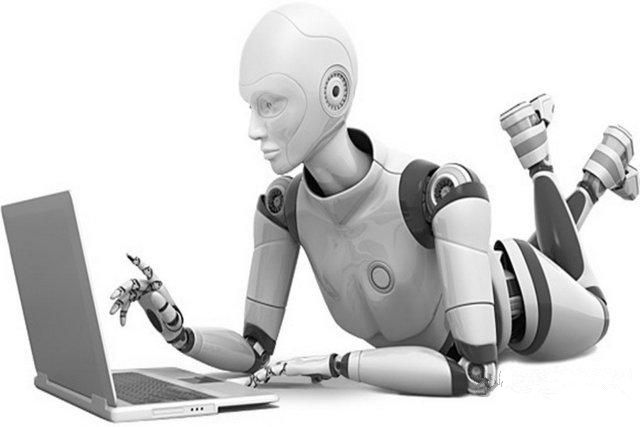Industry Dynamics
Development of robot technology: Ten problems existing

Robots everywhere can easily cause us an illusion that robots have entered thousands of households and are everywhere in our lives. However, the reality is that the popularity of robots is still facing a lot of obstacles. Recently, the Science Robotics magazine lists ten major challenges facing robotics and meantime ten opportunities as well.
Robotics are no longer limited to manufacturing robots, such as motors, gears and sensors, and begin to try new manufacturing methods, such as artificial muscles, software robots, and the integration of various functions into a kind of material. But most of these advanced manufacturing methods are "one-off" demonstration, and it is difficult to combine them.
Fusion of multifunctional materials such as induction, mobile, energy harvesting or energy storage can make robot design more efficient. But combining these different attributes on one machine requires a new method to combine microscale and large scale manufacturing technology. Another promising research area is materials that can adapt to the environment or self cure over time, but more research is needed.
Nature has solved many of the problems that robotics are trying to solve, so many people turn to biology to seek inspiration and even try to integrate their life systems into their robots. However, there is still a big bottleneck in the mechanical performance of the muscle and the ability of the biological system to provide energy.
Artificial muscle has made great progress, but its robustness, efficiency, energy and power density still need to be improved. Living cell embedded robots can overcome the difficulty of providing power for small robots, and can also embed biological characteristics such as self repair and embedded sensing into robots. However, how to integrate these parts is still a major challenge. Although more and more "robotic animals" are helping to uncover the secrets of nature, we have a lot of work to do, such as how animals can transform their capabilities between flight and swimming to help humans build multichannel platforms.
Energy storage is a major bottleneck for mobile robots. The growing demand for unmanned aerial vehicles, electric vehicles and renewable energy has promoted the progress of battery technology, but the fundamental challenges have remained unchanged for many years.
This means that while the battery is developed, efforts should be made to minimize the power needs of the robots, and to get them new energy to enable them to acquire energy from the environment or to transmit energy to them in a wireless manner, which are two promising research directions.
Groups of simple robots are assembled into different structures to handle different tasks, which may be a cheaper and more flexible alternative to large robots that perform specific tasks. Smaller, cheaper, and more powerful hardware, combined with artificial intelligence, allows simple robots to perceive the surrounding environment and communicate, thus simulating the behavior seen in the community of nature.
However, more work is needed for the most effective control of different scale robot groups, because small groups can concentrate control, but large groups need more decentralized control. These robots also need to be more robust, able to adapt to changes in the real world and resist intentional or accidental injuries. In addition, more research on heterogeneous robots with complementary functions is needed.
One of the key uses of robots is to explore places that humans can not reach, such as deep sea, space or disaster areas. This means that they need to be good at exploring and navigating in environments without maps and usually extremely confusing and dangerous.
The main challenges include creating systems that can adapt, learn and recover from the failure of navigation, and are able to explore and identify new discoveries. This requires a high degree of autonomy, allowing robots to monitor and reset themselves, and to build a world image with multiple sources of data with different reliability and accuracy.
Deep learning has completely changed the ability of machine recognition patterns, but it needs to be combined with model based reasoning to create adaptable robots that can be learned in the process of work.
The key is to create artificial intelligence, so that it can realize its limitations and learn how to learn new things. It is also important to create a system that can learn quickly from limited data, rather than learning from millions of examples needed for deep learning. Our further understanding of human intelligence will be the key to solving these problems.
The brain machine interface will be able to make seamless control of advanced robotic prosthetics, but it also proves a faster, more natural way to convey instructions to the robot, or to help them understand the mental state of the human being.
At present, most methods of measuring brain activity are extremely expensive and cumbersome. Therefore, it is very important to work on compact, low power and wireless devices. Because of the inaccuracy of reading brain activity, they also tend to expand training, calibration and adaptation. And whether they will outperform some simpler techniques, such as eye tracking or reading muscle signals, remains to be seen.
If robots want to enter the living environment of human beings, they need to learn to deal with humans. But this is very difficult, because we have few specific human behavior models, and we can easily underestimate the complexity of nature.
Social robots need to be able to perceive subtle social clues, such as expressions and intonation, to understand the cultural and social background they are in, and to model the psychological state of those who interact with them to adapt to human communication, whether in the process of short-term or long-term relationships.
Medicine is one of the areas where robots may have a significant impact in the near future. Robot equipment to enhance the ability of surgeons is in normal use, but one of the major challenges is to improve the autonomy of these systems in such a high risk environment.
Autonomous Robot assistants need to identify human structures in various scenarios, and use situational awareness and voice commands to understand the needs of different scenarios. In surgical operations, autonomous robots can perform routine procedures in the operation process, allowing surgeons to serve patients with more complex conditions.
Micro robots operating within the human body are also promising, but there are still many obstacles to use such robots, including effective transmission systems, tracking and control methods, and more importantly, to find treatments that can improve existing methods.
Categories
Contact Us
Contact: Evan Lee
Phone: +86-15-389-284-256
Tel: +86-(0)29-33-418-740
Add: Building A2, Guorun City, Xixian Avenue, Fengdong New Town, Xi'an, Shaanxi, China
 Evan Lee
Evan Lee